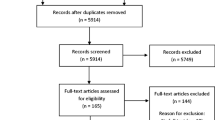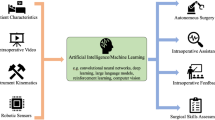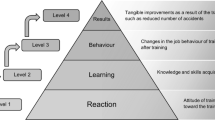Abstract
Purpose
NeuroTouch is a virtual reality (VR) simulator developed for neurosurgical skill training. Validation demonstrating that the system is useful and reliable is required for formal adoption into training curriculums. Face and content validity have been demonstrated for some neurosurgical simulators, but construct validity remains difficult to establish. A pilot validation study was conducted for a NeuroTouch training exercise.
Methods
Participants completed the internal resection of a simulated convexity meningioma and filled out questionnaires to provide feedback on the experience. Performance metrics included volume of tissues removed, tool path lengths, duration of excessive forces applied and efficient use of the aspirator. Results were analyzed according to participants’ level of training, gender, handedness, surgical experience in meningioma removal and hours/week playing musical instruments or video games.
Results
Seventy-two participants (10 medical students, 18 junior residents and 44 senior residents) were enrolled. Analyses demonstrated statistically significant increase in tumor removed and efficiency of ultrasonic aspirator use between medical students and residents, but not between junior and senior residents. After covariate adjustment for the number of meningioma cases operated on, multivariate analysis of the level of training became nonsignificant. Participants judged the exercise appropriate and realistic, desiring use of the system in current training programs.
Conclusion
We have conducted a pilot validation study for the NeuroTouch tumor resection scenario and demonstrated for the first time, face, content and construct validity of a VR neurosurgical simulation exercise. Future full-scale studies will be conducted in noncompetitive settings and incorporate expert participants.



Similar content being viewed by others
Abbreviations
- AANS:
-
American Association of Neurological Surgeons
- NRC:
-
National Research Council
- VR:
-
Virtual reality
- PGY:
-
Postgraduate year
References
Ferroli P, Tringali G, Acerbi F, Schiariti M, Broggi M, Aquino D, Broggi G (2013) Advanced 3-dimensional planning in neurosurgery. Neurosurgery 72(Suppl 1):54–62. doi:10.1227/NEU.0b013e3182748ee8
Mitha AP, Almekhlafi MA, Janjua MJ, Albuquerque FC, McDougall CG (2013) Simulation and augmented reality in endovascular neurosurgery: lessons from aviation. Neurosurgery 72(Suppl 1):107–114. doi:10.1227/NEU.0b013e31827981fd
Chan S, Conti F, Salisbury K, Blevins NH (2013) Virtual reality simulation in neurosurgery: technologies and evolution. Neurosurgery 72(Suppl 1):154–164. doi:10.1227/NEU.0b013e3182750d26
Alaraj A, Lemole MG, Finkle JH, Yudkowsky R, Wallace A, Luciano C, Banerjee PP, Rizzi SH, Charbel FT (2011) Virtual reality training in neurosurgery: review of current status and future applications. Surg Neurol Int 2(1):52. doi:10.4103/2152-7806.80117
Malone HR, Syed ON, Downes MS, D’Ambrosio AL, Quest DO, Kaiser MG (2010) Simulation in neurosurgery: a review of computer-based simulation environments and their surgical applications. Neurosurgery 67(4):1105–1116. doi:10.1227/NEU.0b013e3181ee46d0
Neubauer A, Wolfsberger S (2013) Virtual endoscopy in neurosurgery: a review. Neurosurgery 72(Suppl 1):97–106. doi:10.1227/NEU.0b013e31827393c9
Choudhury N, Gelinas-Phaneuf N, Delorme S, Del Maestro RF (2012) Fundamentals of neurosurgery: virtual reality tasks for training and evaluation of technical skills. World Neurosurg. doi:10.1016/j.wneu.2012.08.022
Delorme S, Laroche D, Diraddo R, Del Maestro RF (2012) NeuroTouch: a physics-based virtual simulator for cranial microneurosurgery training. Neurosurgery 71(1 Suppl Operative):ons32–ons42. doi:10.1227/NEU.0b013e318249c744
Carter FJ, Schijven MP, Aggarwal R, Grantcharov T, Francis NK, Hanna GB, Jakimowicz JJ (2005) Consensus guidelines for validation of virtual reality surgical simulators. Surg Endosc 19(12):1523–1532. doi:10.1007/s00464-005-0384-2
Gallagher AG, Ritter EM, Champion H, Higgins G, Fried MP, Moses G, Smith CD, Satava RM (2005) Virtual reality simulation for the operating room: proficiency-based training as a paradigm shift in surgical skills training. Ann Surg 241(2):364–372
Lewis TM, Aggarwal R, Kwasnicki RM, Rajaretnam N, Moorthy K, Ahmed A, Darzi A (2012) Can virtual reality simulation be used for advanced bariatric surgical training? Surgery 151(6):779–784. doi:10.1016/j.surg.2012.03.014
Ahlberg G, Enochsson L, Gallagher AG, Hedman L, Hogman C, McClusky DA 3rd, Ramel S, Smith CD, Arvidsson D (2007) Proficiency-based virtual reality training significantly reduces the error rate for residents during their first 10 laparoscopic cholecystectomies. Am J Surg 193(6):797–804. doi:10.1016/j.amjsurg.2006.06.050
Seymour NE, Gallagher AG, Roman SA, O’Brien MK, Bansal VK, Andersen DK, Satava RM (2002) Virtual reality training improves operating room performance: results of a randomized, double-blinded study. Ann Surg 236(4):458–463; discussion 463–454. doi:10.1097/01.SLA.0000028969.51489.B4
Larsen CR, Soerensen JL, Grantcharov TP, Dalsgaard T, Schouenborg L, Ottosen C, Schroeder TV, Ottesen BS (2009) Effect of virtual reality training on laparoscopic surgery: randomised controlled trial. BMJ 338:b1802. doi:10.1136/bmj.b1802
Perrenot C, Perez M, Tran N, Jehl JP, Felblinger J, Bresler L, Hubert J (2012) The virtual reality simulator dV-Trainer®is a valid assessment tool for robotic surgical skills. Surg Endosc 26(9):2587–2593. doi:10.1007/s00464-012-2237-0
Bajka M, Tuchschmid S, Fink D, Székely G, Harders M (2010) Establishing construct validity of a virtual-reality training simulator for hysteroscopy via a multimetric scoring system. Surg Endosc 24(1):79–88
Spiotta AM, Rasmussen PA, Masaryk TJ, Benzel EC, Schlenk R (2012) Simulated diagnostic cerebral angiography in neurosurgical training: a pilot program. J Neurointerv Surg. doi:10.1136/neurintsurg-2012-010319
Chaer RA, Derubertis BG, Lin SC, Bush HL, Karwowski JK, Birk D, Morrissey NJ, Faries PL, McKinsey JF, Kent KC (2006) Simulation improves resident performance in catheter-based intervention: results of a randomized, controlled study. Ann Surg 244(3):343–352
Marcus H, Vakharia V, Kirkman MA, Murphy M, Nandi D (2013) Practice makes perfect? The role of simulation-based deliberate practice and script-based mental rehearsal in the acquisition and maintenance of operative neurosurgical skills. Neurosurgery 72(Suppl 1):124–130. doi:10.1227/NEU.0b013e318270d010
Alaraj A, Charbel FT, Birk D, Tobin M, Luciano C, Banerjee PP, Rizzi S, Sorenson J, Foley K, Slavin K, Roitberg B (2013) Role of cranial and spinal virtual and augmented reality simulation using immersive touch modules in neurosurgical training. Neurosurgery 72(Suppl 1):115–123. doi:10.1227/NEU.0b013e3182753093
Luciano CJ, Banerjee PP, Sorenson JM, Foley KT, Ansari SA, Rizzi S, Germanwala AV, Kranzler L, Chittiboina P, Roitberg BZ (2013) Percutaneous spinal fixation simulation with virtual reality and haptics. Neurosurgery 72(Suppl 1):89–96. doi:10.1227/NEU.0b013e3182750a8d
Banerjee PP, Luciano CJ, Lemole GM Jr, Charbel FT, Oh MY (2007) Accuracy of ventriculostomy catheter placement using a head- and hand-tracked high-resolution virtual reality simulator with haptic feedback. J Neurosurg 107(3):515–521. doi:10.3171/JNS-07/09/0515
Luciano CJ, Banerjee PP, Bellotte B, Oh GM, Lemole Jr M, Charbel FT, Roitberg B (2011) Learning retention of thoracic pedicle screw placement using a high-resolution augmented reality simulator with haptic feedback. Neurosurgery 69 (1 Suppl Operative):ons14–ons19; discussion ons19. doi:10.1227/NEU.0b013e31821954ed
Neubauer A, Brooks R, Brouwer I, Debergue P, Laroche D (2012) Haptic collision handling for simulation of transnasal surgery. Comput Animat Virtual Worlds. doi:10.1002/cav.1489
Borgeat L, Massicotte P, Poirier G, Godin G (2011) Layered surface fluid simulation for surgical training. Med Image Comput Comput Assist Interv MICCAI 14(Pt 1):323–330
Delorme S, Cabral A, Ayres F, Jiang D (2011) Modeling the thermal effect of the bipolar electrocautery for neurosurgery simulation. Stud Health Technol Inform 163:166–172
Jiang D, Choudhury N, Mora V, Delorme S (2010) Characterization of suction and CUSA interaction with brain tissue. In: Paper presented at the proceedings of the 5th international conference on Biomedical simulation, Phoenix, AZ, USA
Mora V, Jiang D, Brooks R, Delorme S (2009) A computer model of soft tissue interaction with a surgical aspirator. Med Image Comput Comput Assist Interv MICCAI 12(Pt 1):51–58
Lemole M, Banerjee PP, Luciano C, Charbel F, Oh M (2009) Virtual ventriculostomy with ‘shifted ventricle’: neurosurgery resident surgical skill assessment using a high-fidelity haptic/graphic virtual reality simulator. Neurol Res 31(4):430–431. doi:10.1179/174313208X353695
Iwata N, Fujiwara M, Kodera Y, Tanaka C, Ohashi N, Nakayama G, Koike M, Nakao A (2011) Construct validity of the LapVR virtual-reality surgical simulator. Surg Endosc 25(2):423–428. doi:10.1007/s00464-010-1184-x
Bajka M, Tuchschmid S, Fink D, Székely G, Harders M (2010) Establishing construct validity of a virtual-reality training simulator for hysteroscopy via a multimetric scoring system. Surg Endosc 24(1):79–88
Pellen MGC, Horgan LF, Barton JR, Attwood SE (2009) Construct validity of the ProMIS laparoscopic simulator. Surg Endosc 23(1):130–139
Selvander M, Asman P (2010) Virtual reality cataract surgery training: learning curves and concurrent validity. Acta Ophthalmol. doi:10.1111/j.1755-3768.2010.02028.x
Fried MP, Sadoughi B, Weghorst SJ, Zeltsan M, Cuellar H, Uribe JI, Sasaki CT, Ross DA, Jacobs JB, Lebowitz RA, Satava RM (2007) Construct validity of the endoscopic sinus surgery simulator: II. Assessment of discriminant validity and expert benchmarking. Arch Otolaryngol Head Neck Surg 133(4):350–357. doi:10.1001/archotol.133.4.350
Paschold M, Schroder M, Kauff DW, Gorbauch T, Herzer M, Lang H, Kneist W (2011) Virtual reality laparoscopy: which potential trainee starts with a higher proficiency level? Int J Comput Assist Radiol Surg 6(5):653–662. doi:10.1007/s11548-010-0542-4
Kolozsvari NO, Andalib A, Kaneva P, Cao J, Vassiliou MC, Fried GM, Feldman LS (2011) Sex is not everything: the role of gender in early performance of a fundamental laparoscopic skill. Surg Endosc 25(4):1037–1042. doi:10.1007/s00464-010-1311-8
Van Herzeele I, O’Donoghue KG, Aggarwal R, Vermassen F, Darzi A, Cheshire NJ (2010) Visuospatial and psychomotor aptitude predicts endovascular performance of inexperienced individuals on a virtual reality simulator. J Vasc Surg Off Publ Soc Vasc Surg Int Soc Cardiovasc Surg N Am Chapter 51(4):1035–1042. doi:10.1016/j.jvs.2009.11.059
Risucci D, Geiss A, Gellman L, Pinard B, Rosser J (2001) Surgeon-specific factors in the acquisition of laparoscopic surgical skills. Am J Surg 181(4):289–293
Grantcharov TP, Bardram L, Funch-Jensen P, Rosenberg J (2003) Impact of hand dominance, gender, and experience with computer games on performance in virtual reality laparoscopy. Surg Endosc 17(7):1082–1085. doi:10.1007/s00464-002-9176-0
Enochsson L, Isaksson B, Tour R, Kjellin A, Hedman L, Wredmark T, Tsai-Fellander L (2004) Visuospatial skills and computer game experience influence the performance of virtual endoscopy. J Gastrointest Surg Off J Soc Surg Aliment Tract 8 (7):876–882; discussion 882. doi:10.1016/j.gassur.2004.06.015
Kennedy AM, Boyle EM, Traynor O, Walsh T, Hill AD (2011) Video gaming enhances psychomotor skills but not visuospatial and perceptual abilities in surgical trainees. J Surg Educ 68(5):414–420. doi:10.1016/j.jsurg.2011.03.009
Fanning J, Fenton B, Johnson C, Johnson J, Rehman S (2011) Comparison of teenaged video gamers vs PGY-I residents in obstetrics and gynecology on a laparoscopic simulator. J Minim Invasive Gynecol 18(2):169–172. doi:10.1016/j.jmig.2010.11.002
Boyle E, Kennedy AM, Traynor O, Hill AD (2011) Training surgical skills using nonsurgical tasks-can Nintendo Wii\(^{\text{ TM }}\) improve surgical performance? J Surg Educ 68(2):148–154. doi: 10.1016/j.jsurg.2010.11.005
Badurdeen S, Abdul-Samad O, Story G, Wilson C, Down S, Harris A (2010) Nintendo Wii video-gaming ability predicts laparoscopic skill. Surg Endosc 24(8):1824–1828. doi:10.1007/s00464-009-0862-z
Schlickum MK, Hedman L, Enochsson L, Kjellin A, Fellander-Tsai L (2009) Systematic video game training in surgical novices improves performance in virtual reality endoscopic surgical simulators: a prospective randomized study. World J Surg 33(11):2360–2367. doi:10.1007/s00268-009-0151-y
Shane MD, Pettitt BJ, Morgenthal CB, Smith CD (2008) Should surgical novices trade their retractors for joysticks? Videogame experience decreases the time needed to acquire surgical skills. Surg Endosc 22(5):1294–1297. doi:10.1007/s00464-007-9614-0
Lynch J, Aughwane P, Hammond TM (2010) Video games and surgical ability: a literature review. J Surg Educ 67(3):184–189. doi:10.1016/j.jsurg.2010.02.010
Madan AK, Harper JL, Frantzides CT, Tichansky DS (2008) Nonsurgical skills do not predict baseline scores in inanimate box or virtual-reality trainers. Surg Endosc 22(7):1686–1689. doi:10.1007/s00464-007-9691-0
Glaser AY, Hall CB, Uribe SJ, Fried MP (2005) The effects of previously acquired skills on sinus surgery simulator performance. Otolaryngol Head Neck Surg Off J Am Acad Otolaryngol Head Neck Surg 133(4):525–530. doi:10.1016/j.otohns.2005.06.022
Selden NR, Barbaro N, Origitano TC, Burchiel KJ (2011) Fundamental skills for entering neurosurgery residents: report of a Pacific region “boot camp” pilot course, 2009. Neurosurgery 68(3):759–764; discussion 764. doi:10.1227/NEU.0b013e3182077969
Selden NR, Origitano TC, Burchiel KJ, Getch CC, Anderson VC, McCartney S, Abdulrauf SI, Barrow DL, Ehni BL, Grady MS, Hadjipanayis CG, Heilman CB, Popp AJ, Sawaya R, Schuster JM, Wu JK, Barbaro NM (2012) A national fundamentals curriculum for neurosurgery PGY1 residents: the 2010 Society of Neurological Surgeons boot camp courses. Neurosurgery 70 (4):971–981; discussion 981. doi:10.1227/NEU.0b013e31823d7a45
Laurence BG (2007) Who holds physicians accountable? Trans Am Clin Climatol Assoc 118:57–68
Acknowledgments
We would like to thank all the individuals at the National Research Council Canada (NRC) and all the collaborators at Canadian and international Universities involved in this project. The VR surgical simulation program has been funded by the NRC Genomics and Health Initiative. This work was also supported by the Montréal English School Board, the Franco Di Giovanni, B-Strong, the Tony Colannino Foundations and the Montreal Neurological Institute and Hospital. Dr. Gelinas-Phaneuf was funded by a generous contribution from the Harold and Audrey Fisher Brain Tumour Research Award. Dr. Del Maestro holds the William Feindel Chair of Neuro-Oncology at the Montreal Neurological Institute.
Conflict of Interest
The authors declare no conflict of interest.
Author information
Authors and Affiliations
Corresponding authors
Electronic supplementary material
Below is the link to the electronic supplementary material.
Rights and permissions
About this article
Cite this article
Gélinas-Phaneuf, N., Choudhury, N., Al-Habib, A.R. et al. Assessing performance in brain tumor resection using a novel virtual reality simulator. Int J CARS 9, 1–9 (2014). https://doi.org/10.1007/s11548-013-0905-8
Received:
Accepted:
Published:
Issue Date:
DOI: https://doi.org/10.1007/s11548-013-0905-8




